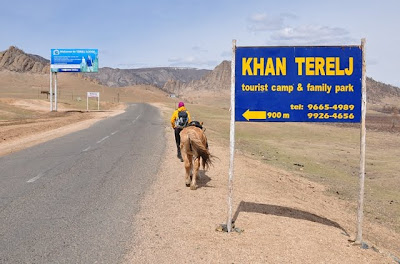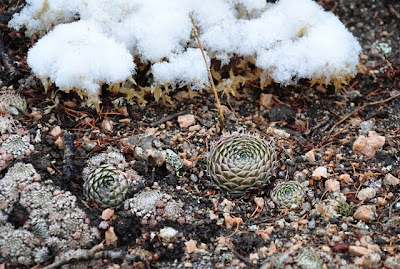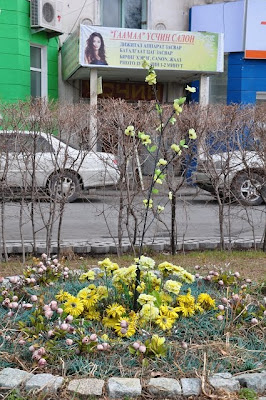I’m recently back from a journey that took me through Russia, Mongolia, China, Tibet, and Nepal (and I’m aware that China considers Tibet an “autonomous region” of China and not a nation in its own right; that China “liberated” Tibet 60 years ago. But nobody - absolutely nobody in their right mind and not brainwashed by the chinese dictatorship - can see the ruthless chinese oppression of Tibet as anything else than a blatant occupation! More on that in an upcoming post).
I visited Russia (Siberia) during very early spring and my photos from that part of the trip mainly boils down to those of leafless birch trees; so I’ll skip Russia and jump straight to Mongolia in this floristic travelogue ;-) I’m in the unfortunate situation that I don’t know the names of most of the plants featured in this post so any help is appreciated ;-)

Cream flowers

Yellow flowers

Light blue / lilac flowers
After spending some days in Ulan Bator (Ulaanbaatar), the capital and largest city of Mongolia, we set out for Gorkhi-Terelj National Park. It was still early spring but a few plants were flowering, including the cream, yellow, and light blue/lilac flowered plants pictured above. Especially the latter was abundant, in many places almost covering the grassy slopes with its beautiful flowers.
My expectations to Gorkhi-Terelj involved imagery of serene, unperturbed nature allowing for days of pure trekking bliss ;-) However the “developed” part of the park we visited is on the verge of being destroyed by golf courts, tourist ger camps, ubiquitous signs and posters, road construction, housing development, and the like. In their eagerness to attract more visitors the very soul of what people are coming to see are being destroyed. It’s a big shame.
That being said it’s still possible to find undisturbed spots among the rolling, grassy hills and beautiful rock formations (in many ways reminding of the monzogranite formations at Joshua Tree National Park) where you can get a sense of being in the wilderness. If you are of an imaginative temperament it’s not even hard to envision Genghis Khan (Chinggis Khaan) galloping across the steppes; otherwise you can go see the (quite clumsy and ugly, yet colossal) Genghis Khan monument ;-)

A few of the ubiquitous signs and posters

Road construction near Turtle Rock
Another plant that is abundant in Terelj is (what I take to be) Orostachys spinosa, a cold-tolerant alpine native to Siberia and Mongolia. Its fleshy leaves are arranged in a rosette, growing to 10 cm (4'') in diameter at maturity. The plant is said to be able to survive extreme freezing temperatures down to -40°C. I collected a few of these plants in the hope to grow them on my balcony here in Copenhagen, but unfortunately most of them died off in a storage room in Kathmandu - one small plant is still alive though, so I keep my hopes high ;-)

A cluster of Orostachys spinosa
Back in Ulan Bator the only plants we could find were made of plastic. At first I found it a bit strange to have outdoor plastic flower arrangements in a park, but it seemed like a common practice.

Red plastic flowers

Yellow plastic flowers
Malpighia 1927 v.30 (added: 11/24/2025)
-
*By:*
Borzi, Antonino,1852-1921.
Penzig, O.1856-1929.
Pirotta, Romualdo,1853-1936.
*Publication Info:*
Messina : g. Capra & co., 1887-89 ; Genova : Tip. di A...
1 month ago



















I think that first and third flowers are some Pulsatílla (flavescens and patens?). Second - Potentilla (nivea?).
ReplyDeleteHave yourself an excellent winter solstice. ;)
ReplyDeleteThanks Z. And soon it's time to celebrate again :)
Deleteguessing from the leaves and the center of the flower, i would say the first three photos of the purple, cream, and yellow flowers are some variety of the ranunculaceae family :)
ReplyDeleteGreat blog, I invite you to my blog:
ReplyDeletehttp://sukulentydlazapracowanych.blogspot.com/
I love traveling and seeking out new plant habitats! I think your wildflowers at the top of the post are a speices of pulsatilla (pasque flower).
ReplyDeleteArt and Nat, thanks for helping with this. The flowers do indeed look like species of Pulsatilla (pasque flower) and Potentilla.
ReplyDelete